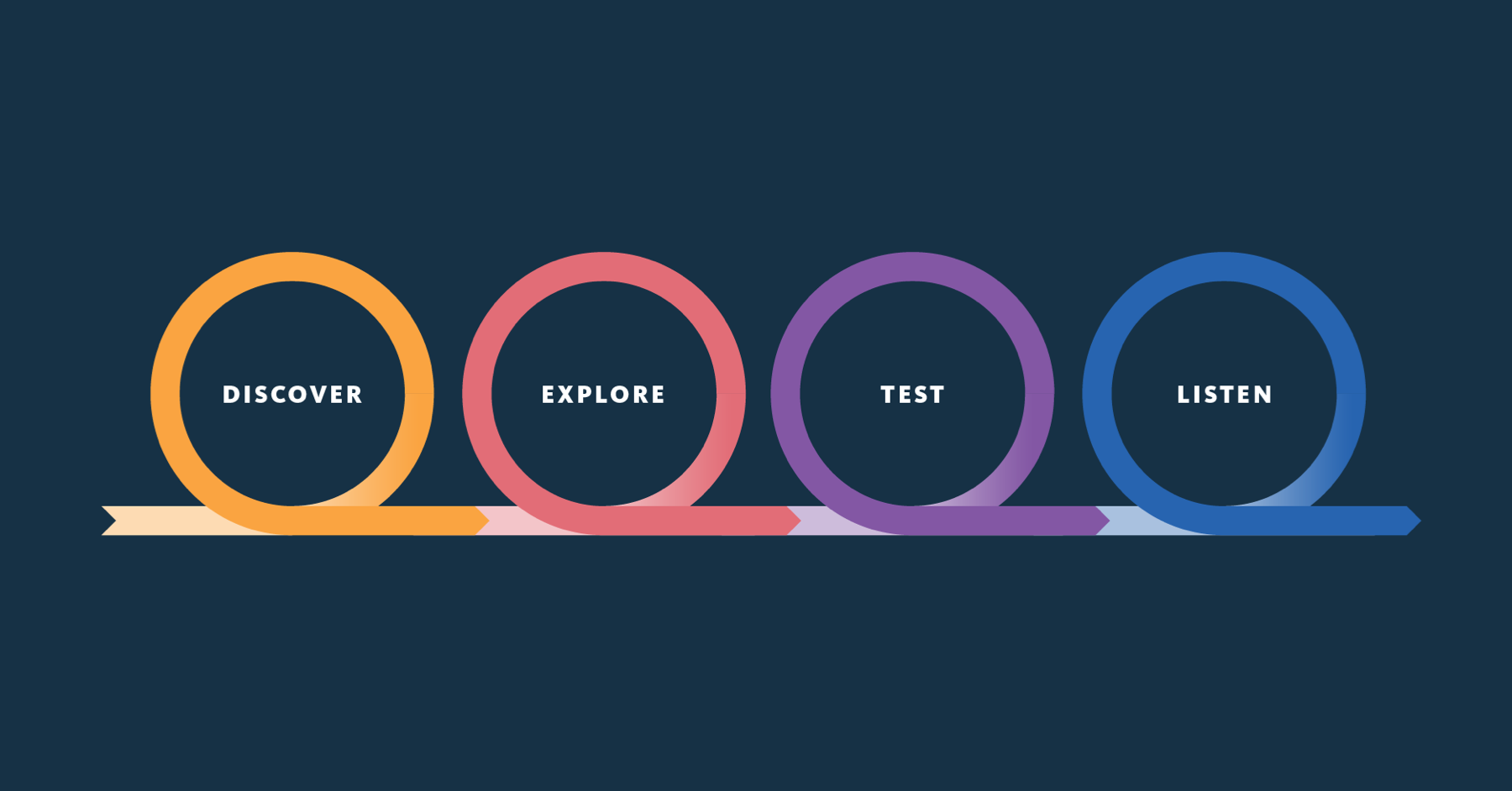DESIGN AND TECHNOLOGY GUIDES
A guide to design research, stages, and methodologies
As a research-driven team of builders at Think Company, we’re big proponents and practitioners of design research. At its core, design research is about understanding user needs and assessing priorities before creating solutions to ensure you build the right thing. By incorporating design research into the early stages of your design process, you can more easily focus your goals, streamline your processes, and ultimately create something that meets users’ needs.

What is design research?
Sometimes referred to as UX research, design validation, or UX design research, what we call design research is the process of understanding how someone is using a tool, product, or process, which is a form of generative research. You’re seeking to learn about the user and their needs, and then using that data to inform decision-making. Unlike market research, you’re not just looking for what the user wants; you’re looking for how they interact with your tool or service.
Understanding how a user is navigating your design can help with:
- Saving time and money
-
- Taking the time to research at the beginning will help to ensure that you’re building the right thing for your users—saving you costly revisions down the road
- Focusing goals and roadmaps
- Data from research helps to focus the goals of the project to get everyone aligned on what success looks like
- Removing bias
- Instinct has its place, but when you’re making product decisions, getting everyone aligned around hard facts about the user’s experience is good for the team and your users
- Validating ideas
- Design research helps you validate innovative ideas before launching, so you know if that new direction is going to work before you do a full, expensive rollout of a feature that users may not love
Design research encompasses quantitative and qualitative research. While these two types of research are separate, qualitative and quantitative research work together to help provide a full picture.
Quantitative research
Quantitative research is fundamentally about numbers. It focuses on data that can be precisely measured and allows researchers to formally test hypotheses. Quantitative data also lends itself to statistical analyses, which lets you make inferences about your sample and understand the implications of those results. This includes things like letting you know exactly how confident you should be in your findings, allowing you to make better-informed decisions.
Qualitative research
Qualitative research helps you understand why people behave a certain way. It helps to answer less defined questions like, “What do people first notice on the dashboard?” Qualitative research is usually more complex and often involves user interviews or dialogue with the users themselves.
Why is research important in design?
One of the most significant benefits we’ve seen with design research is that it creates a source of truth that the whole organization can rally around. When ideas are swirling, everyone can always come back to the research. If you want the best for your company and product, centering the user’s experience is always the best decision you can make. It helps to provide a perspective that the team may not be able to generate on their own.
Other ways design research is crucial to the design process:
- Ensures your product is relevant to user needs
- Streamlines the creation process by creating a single source of truth
- Provides increased ROI by narrowing the margin for error (creating irrelevant features or designs)
Many people think of research as being beneficial only during the beginning of a project. But most successful companies build research into their product development, too. If you’ve made a design change and your metrics evolve unexpectedly, research and testing can help you uncover the source of changes in user behavior and adapt your design to help you get the results you need.
Design research stages
As we discuss the stages of design research, it’s important to understand that this process isn’t linear. That said, these stages can flow from one to another, so you can use this process as a rough guide. But remember, this is ultimately about selecting the stage and tactic that works best for your needs.
There is a wide range of design research tactics and methods, and they can be broken down into four major stages:
- Discover
- Explore
- Test
- Listen (always)

Discover
Discovery tactics include conducting field studies and user or stakeholder interviews. This category encompasses learning what you know—and what you don’t.
Explore
With exploratory tactics, your team uses methods like competitive analysis, card sorting, and journey mapping to prevent errors, avoid waste, and generally explore and analyze the ideas you’ve uncovered.
Test
It’s crucial to test your ideas and theories to make sure they’re logistically feasible and that users respond the way you want them to. This usually looks like qualitative usability testing, benchmark testing, and an accessibility evaluation.
Listen
By paying attention to your users’ sentiments about the design, you can see how successful your designs are and adapt as needed in the future. Search-log analysis, feedback reviews, and FAQ reviews are some of the most common listening tactics we see.
While we’ve broken this into its own stage, it’s important to note that listening is critical throughout the entire research process. Users might tell you something you didn’t want to hear or share an idea that’s new to you. You have to be able to remove bias to truly hear what users are saying.
Benefits of design research
Incorporating research into your design process is the gift that keeps on giving. Research should always be actionable. This isn’t just about collecting data—what are the action items associated with this info. Are you making a roadmap? By starting design research early—and performing it often—you place the user at the center of the design process, streamline your team’s efforts, and generate new ideas that lead to more research.
Design research is the best way to validate your ideas and move forward with solid decision-making.
Choosing the right design research method
The question you should always start with is: “What do I want to learn and why?” By identifying what you want to learn and why, you can select methodologies that support your team, users, and your long-term goals for success.
Time and money are obvious factors here—but there can be multiple methods that help you achieve a goal. One option could be scrappy if you’re tight on budget and the results don’t necessarily need to be watertight. One option could be more in-depth and extensive for answers you really need to rely on. It’s all about what you want, need, and can invest in learning.